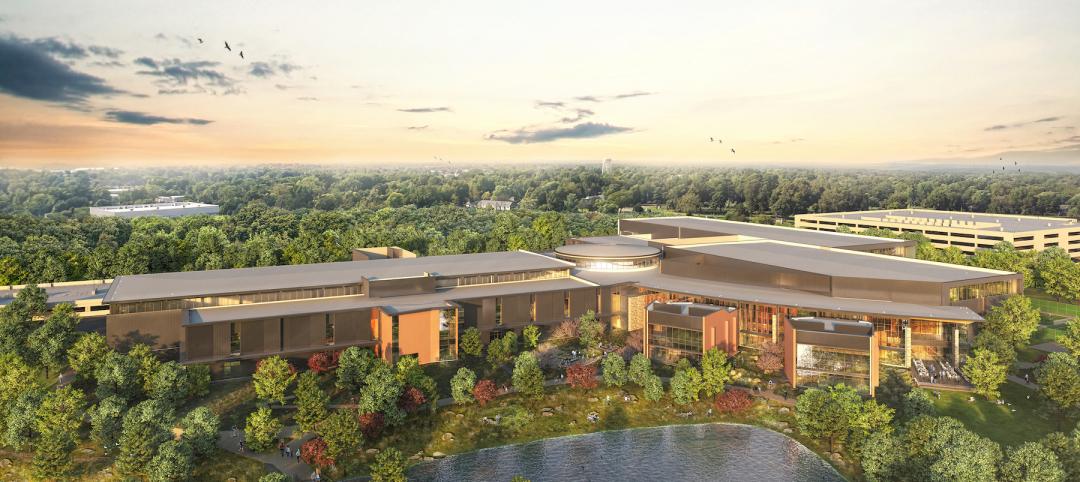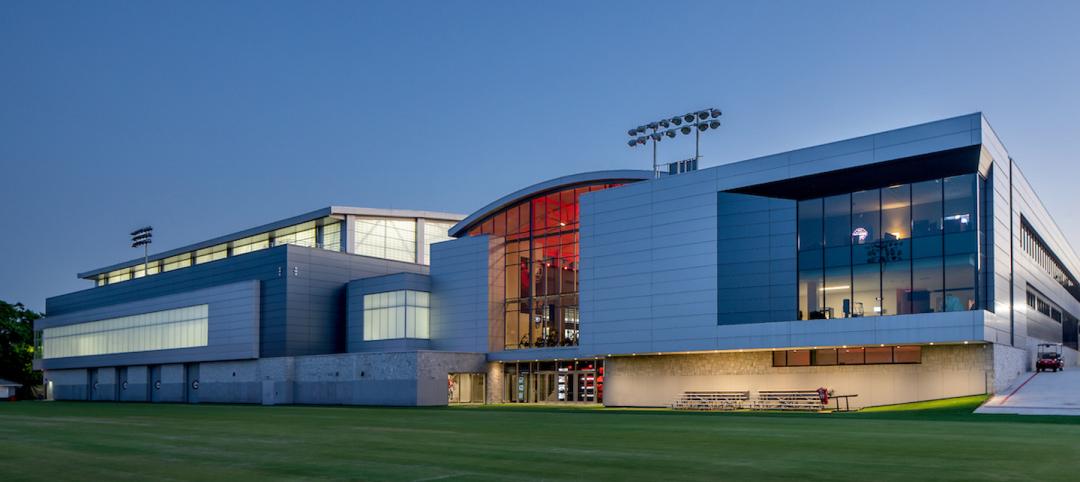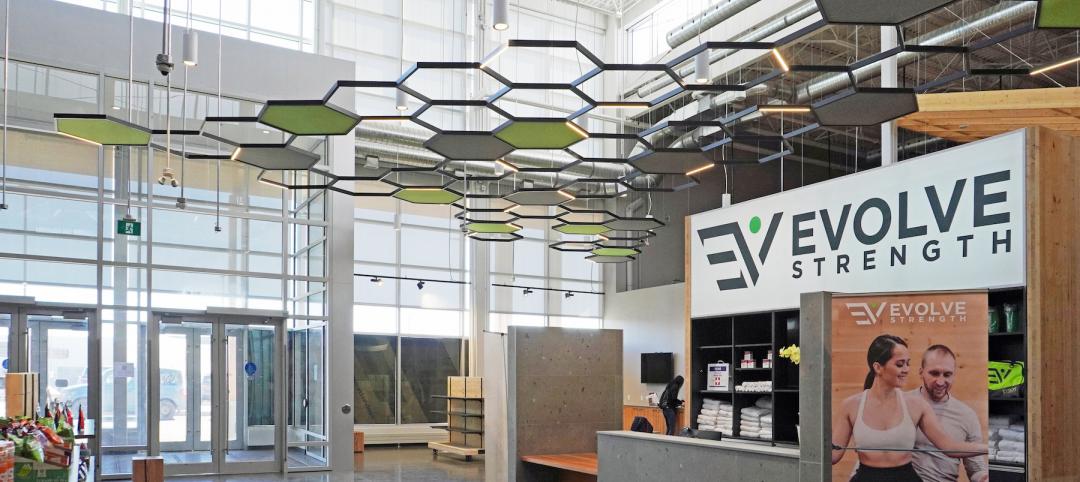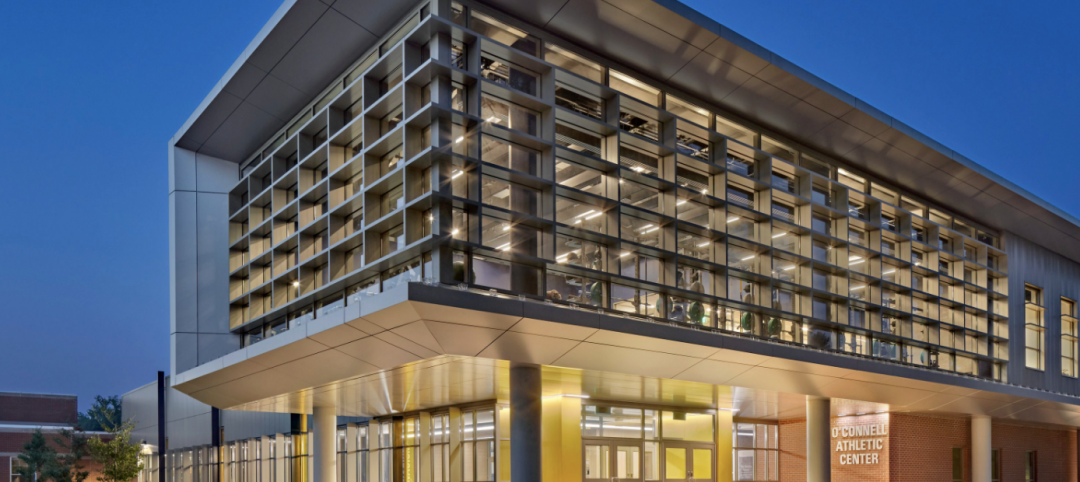The new home for the L.A. Rams and L.A. Chargers will not be opening as soon as was originally intended. The 70,000-seat stadium was initially scheduled to be ready in time for the 2019 NFL season, but thanks to a surfeit of rain the opening will be delayed until the start of the 2020 season, the Los Angeles Times reports.
The rainfall in the area didn’t just reach record amounts, but it also occurred at the worst possible time during the HKS-design stadium’s construction: the excavation phase.
At times, the stadium’s excavation site was filled with as much as 10 to 12 feet of standing water, which needed to be drained before work could resume. This caused the project, which is being built by Turner Construction and AECOM, to screech to a halt for two months.
The two months can’t be made up over the next two years, thus getting the project back on schedule, due to an already ambitious construction timetable and the increased workload associated with creating a stadium that will house two separate teams, according to the LA Times.
Due to the delay, the Rams will continue to play in the Coliseum for the 2019 season while the Chargers will have to play their home games at the StubHub Center for an extra season. While the Coliseum has a seating capacity of around 93,000, the StubHub center only offers 27,000 seats, but this will be expanded to 30,000 for Chargers games.
The stadium will be the focal point of a mixed-use entertainment district that will include a 300-room hotel, retail and office space, and a 6,000-seat performance venue.
Related Stories
Multifamily Housing | Aug 3, 2022
7 tips for designing fitness studios in multifamily housing developments
Cortland’s Karl Smith, aka “Dr Fitness,” offers advice on how to design and operate new and renovated gyms in apartment communities.
Reconstruction & Renovation | Aug 3, 2022
Chicago proposes three options for Soldier Field renovation including domed stadium
The City of Chicago recently announced design concepts for renovations to Soldier Field, the home of the NFL’s Chicago Bears.
Headquarters | Jun 21, 2022
Walmart combines fitness and wellness in associates’ center that’s part of its new Home Office plan
Duda | Paine’s design leads visitors on a “journey.”
Sports and Recreational Facilities | Jun 17, 2022
U. of Georgia football facility expansion provides three floors for high-performance training
A major expansion of the University of Georgia’s football training facility has been completed.
Building Team | Jun 14, 2022
Thinking beyond the stadium: the future of district development
Traditional sports and entertainment venues are fading as teams and entertainment entities strive to move toward more diversified entertainment districts.
Acoustic Panels | Jun 9, 2022
A fitness center renovation in Calgary focuses on tamping the building’s sound and vibration
Bold Interior Design chose as its solution a lighting/acoustical panel combination.
Sports and Recreational Facilities | May 26, 2022
WNBA practice facility will offer training opportunities for female athletes and youth
The Seattle Storm’s Center for Basketball Performance will feature amenities for community youth, including basketball courts, a nutrition center, and strength and conditioning training spaces.
Sports and Recreational Facilities | May 19, 2022
Northern Arizona University opens a new training center for its student athletes
In Flagstaff, Ariz. Northern Arizona University (NAU) has opened its new Student-Athlete High Performance Center.
University Buildings | May 9, 2022
An athletic center accentuates a college’s transformation
Modern design and a student health center distinguish the new addition at The University of Saint Joseph in Connecticut.
Sponsored | BD+C University Course | May 3, 2022
For glass openings, how big is too big?
Advances in glazing materials and glass building systems offer a seemingly unlimited horizon for not only glass performance, but also for the size and extent of these light, transparent forms. Both for enclosures and for indoor environments, novel products and assemblies allow for more glass and less opaque structure—often in places that previously limited their use.

















